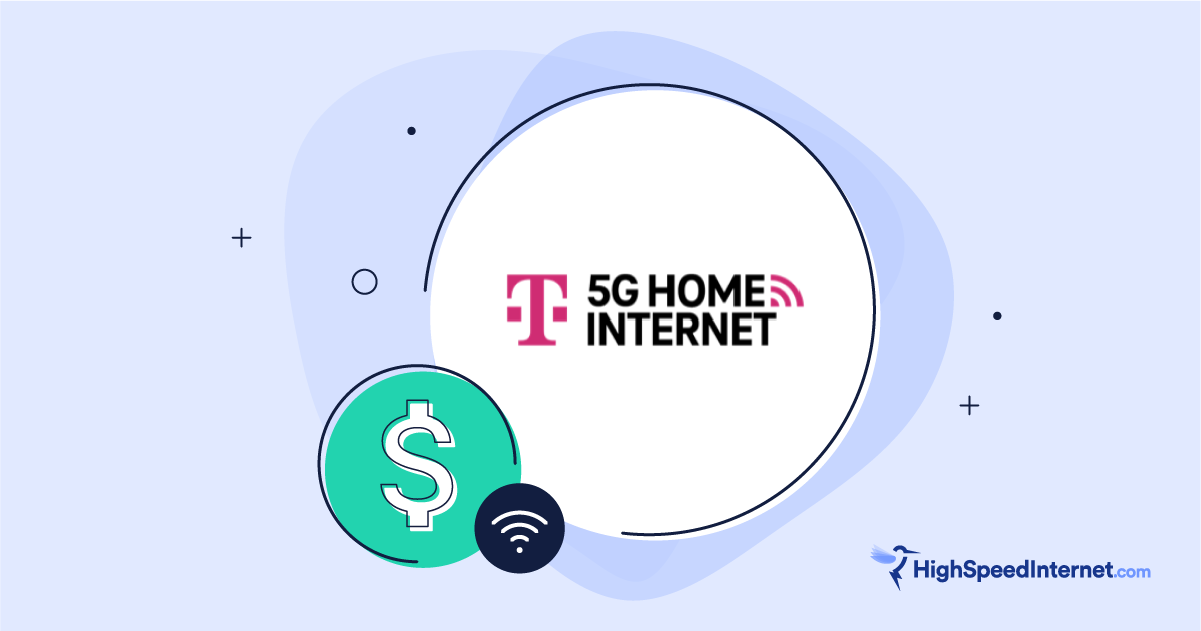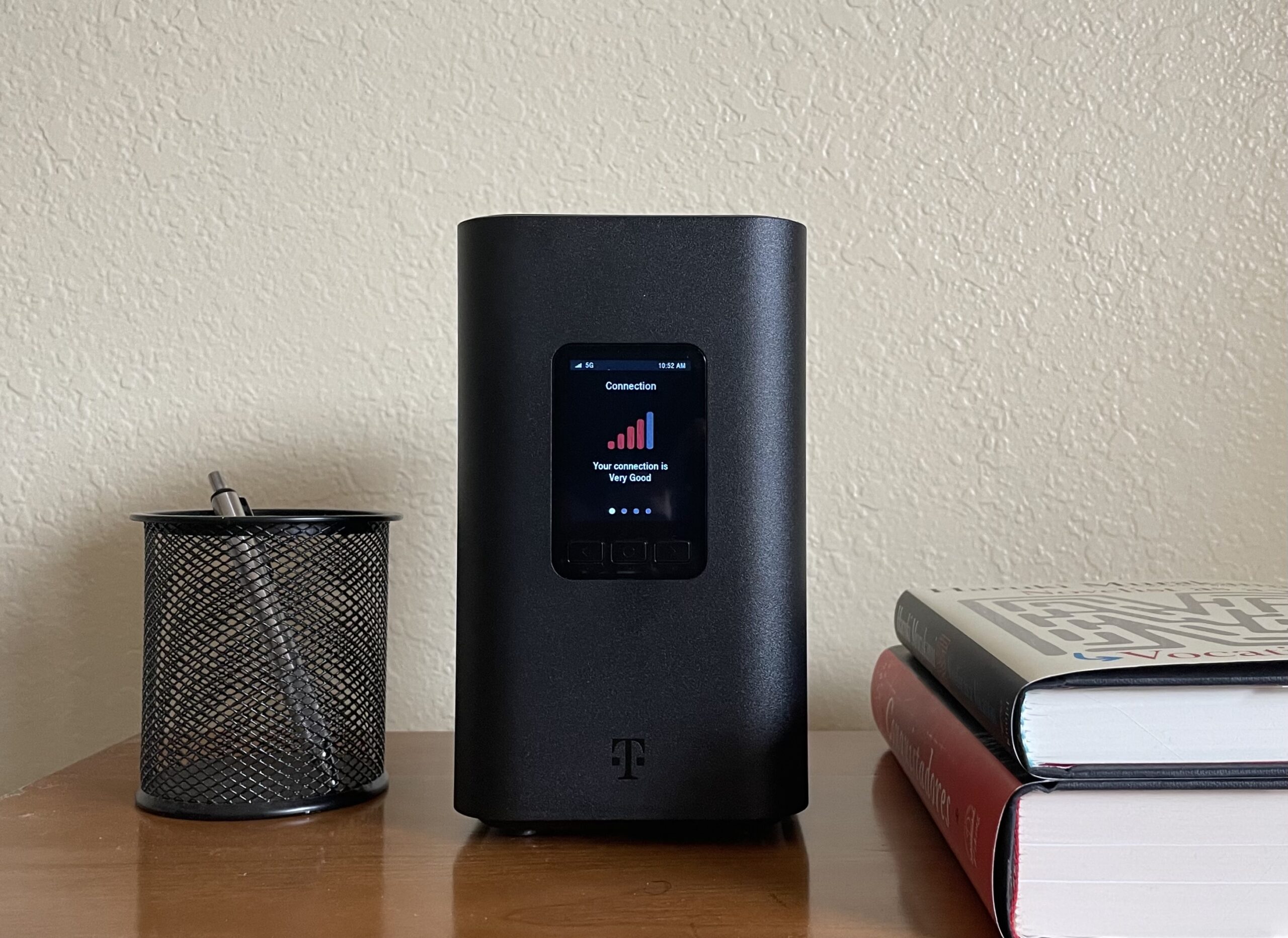How To Get High-Speed Wi-Fi While Traveling
Try your smartphone's hotspot first
Aug 6, 2025 | Share
How-To
-
Best for short trips
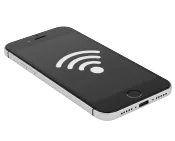 Our top pick: Your phone's hotspotWi-Fi tethering
Our top pick: Your phone's hotspotWi-Fi tethering- No extra equipment needed
- Indoor and outdoor connectivity
- Uses phone battery
- Phone plan must include hotspot data
-
Best for budgets
 Our top pick: Starbucks Wi-FiPublic Wi-Fi
Our top pick: Starbucks Wi-FiPublic Wi-Fi- Cheap (or free)
- Easy to find in cities and suburbs
- Slow speeds
- Security risks
-
Best for RV travelOur top pick: Starlink MiniSatellite internet
- High-speed, low-latency connections
- Global connectivity, even in remote areas
- Expensive startup costs
- Requires outdoor setup
There are a bunch of ways you can get high-speed Wi-Fi while you’re traveling. Your smartphone’s personal hotspot is the easiest and most reliable option, giving you Wi-Fi access for multiple devices, whether you’re on a long drive, staying at a vacation home, or even traveling abroad.
If you’re getting close to your data budget on your phone plan, hotels and restaurants often have free Wi-Fi for customers.
If you need high-speed, low-latency connectivity from anywhere (and have the budget for it), satellite internet from Starlink is a game changer. You could also get portable Wi-Fi from a built-in car hotspot or fixed wireless plan from T-Mobile. We’ve stopped recommending portable Wi-Fi hotspot devices for most folks, though.
Best ways to get Wi-Fi while traveling:
- Best for short trips: Personal smartphone hotspots
- Best for international travel: Travel hotspots and SIM cards
- Best for budget travelers: Hotel or restaurant Wi-Fi
- Best for road trips: Your car’s built-in hotspot
- Best for RVs and digital nomads: Starlink Mini satellite internet
Best for short trips: Smartphone hotspots
The hotspot on your phone is the easiest and quickest way to get Wi-Fi while traveling. As long as you have a data plan and network coverage, just switch on the Wi-Fi hotspot to provide internet access for your laptops, tablets, and phones.
Most phone plans come with hotspot data, so using one doesn’t tax your wallet. If you use this capability often, invest in two things to improve your experience: a premium mobile phone plan with lots of hotspot data and a portable charger that can keep your phone powered up while it acts as a mini-router for your other devices.
It’s worth noting that you’ll only be able to use your phone as a hotspot if you can get a strong 4G LTE or 5G signal. This may be difficult or impossible in remote areas, but mobile coverage in 2025 is better than ever. Don’t stress it.
Pros
No extra equipment needed
Works indoors and outdoors
Connectivity from almost anywhere
Cons
Uses phone battery
Phone plan must include hotspot data
Won’t work if you can’t get a phone signal
Best phone plans for hotspotting
| Hotspot plan | Single-line price | Hotspot data cap | Order online |
|---|---|---|---|
| T-Mobile Experience More | $85.00/mo.* | 60GB/mo. (then slowed) | |
| Verizon Unlimited Ultimate | $90.00/mo.† | 200GB/mo. (then slowed) | |
| AT&T Unlimited Premium PL | $85.99/mo.‡ | 60 GB/mo. (then slowed) | |
| Visible+ Pro | $40.00/mo.§ | Unlimited at 15Mbps speeds |
Data as of 07/30/2025. Availability and speed may vary by location, and prices are subject to change. See disclaimers.
Premium smartphone plans offer huge buckets of hotspot data these days—more than you need, if we’re being honest. You’ll likely do just fine with the hotspot data on the plan you already have.
If you plan to use your phone’s hotspot as a temporary home internet replacement, however, consider premium smartphone plans from Verizon or T-Mobile. Their hotspot data will get you through a week or two of moderate internet usage for a few devices, or up to a month if you budget your data wisely.
Best for international travel: Your phone or local eSIM cards
Like with domestic travel, the phone you already have is the best way to get Wi-Fi while traveling internationally. Just make sure you call your carrier before you leave the States to find out about rates and coverage.
If you discover there won’t be any coverage where you’re planning to go and you really need internet while abroad—for example, if you’re working remotely or need to make regular Zoom calls to family back home—we recommend getting an eSIM card from a local phone carrier in the country you’re visiting.
Pro tip: Be careful with travel hotspots
We’re hesitant to recommend travel hotspots because you have no way of knowing how well the hotspot actually works (if at all) until you’ve already bought the thing and gone on your trip. But the GlocalMe G4 Pro gets good reviews online, it’s easy to handle, and it comes with a pre-installed Google Maps app to help out in case you get lost.
Best for budget travelers: Hotel and restaurant Wi-Fi
Nothing beats hotel Wi-Fi, am I right? Most hotels and restaurants nowadays offer free Wi-Fi with their services, and anyone who’s ever spent a long layover in Paris or Istanbul knows how convenient free Wi-Fi can be.
See below for a list of places where you can find public Wi-Fi (including lots of free options). You will be safest on Wi-Fi hotspots that require a password, especially if you follow standard security practices. But consider investing in a travel router to boost your signal range or a VPN to increase browser security if you’re handling sensitive data or plan to visit websites you can’t trust completely.
Pros
Cheap or free (included with a hotel room or drink)
Easy to find in cities and suburbs
Cons
Slow speeds
Higher security risk
Where to find free Wi-Fi
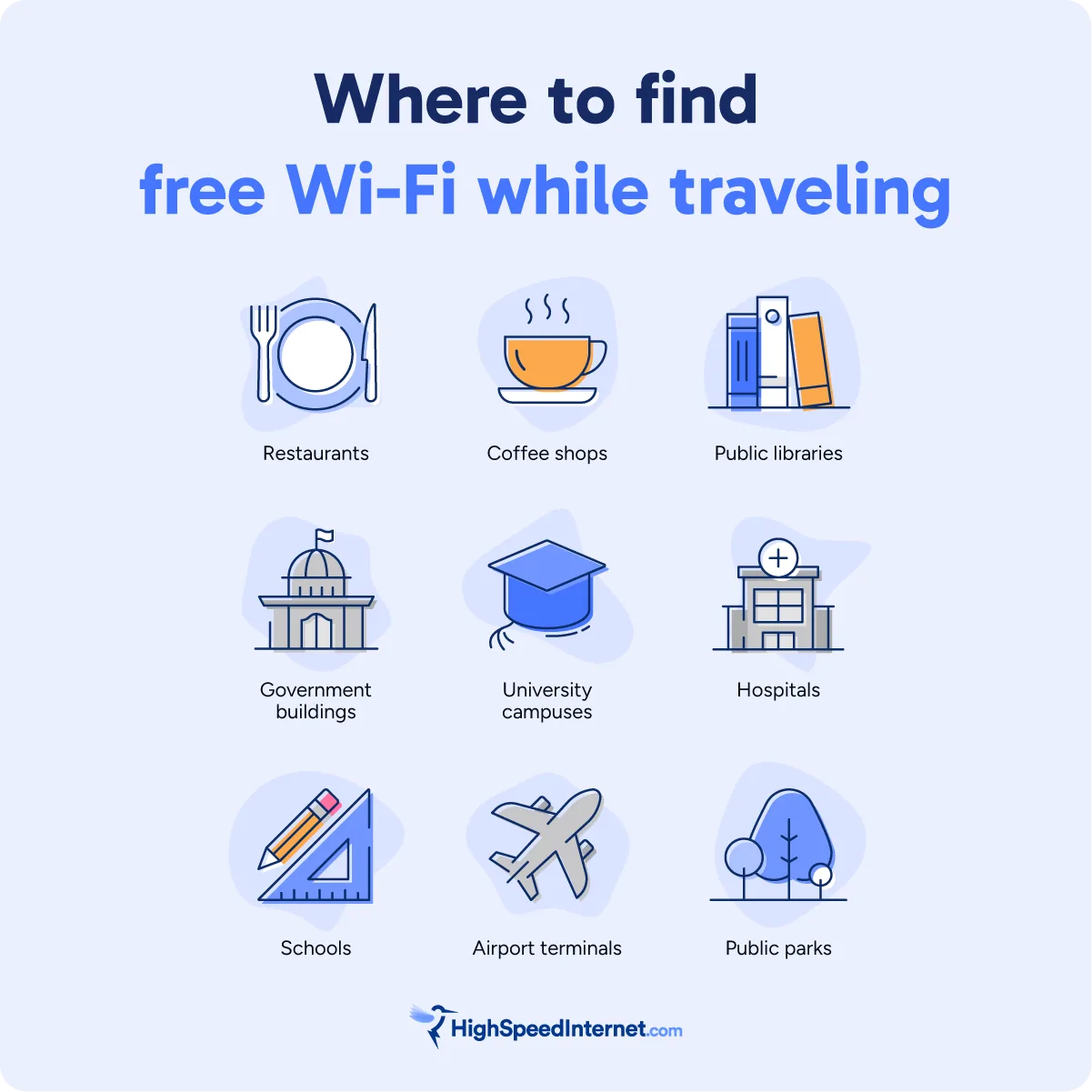
Popular restaurant and retail chains with free Wi-Fi:
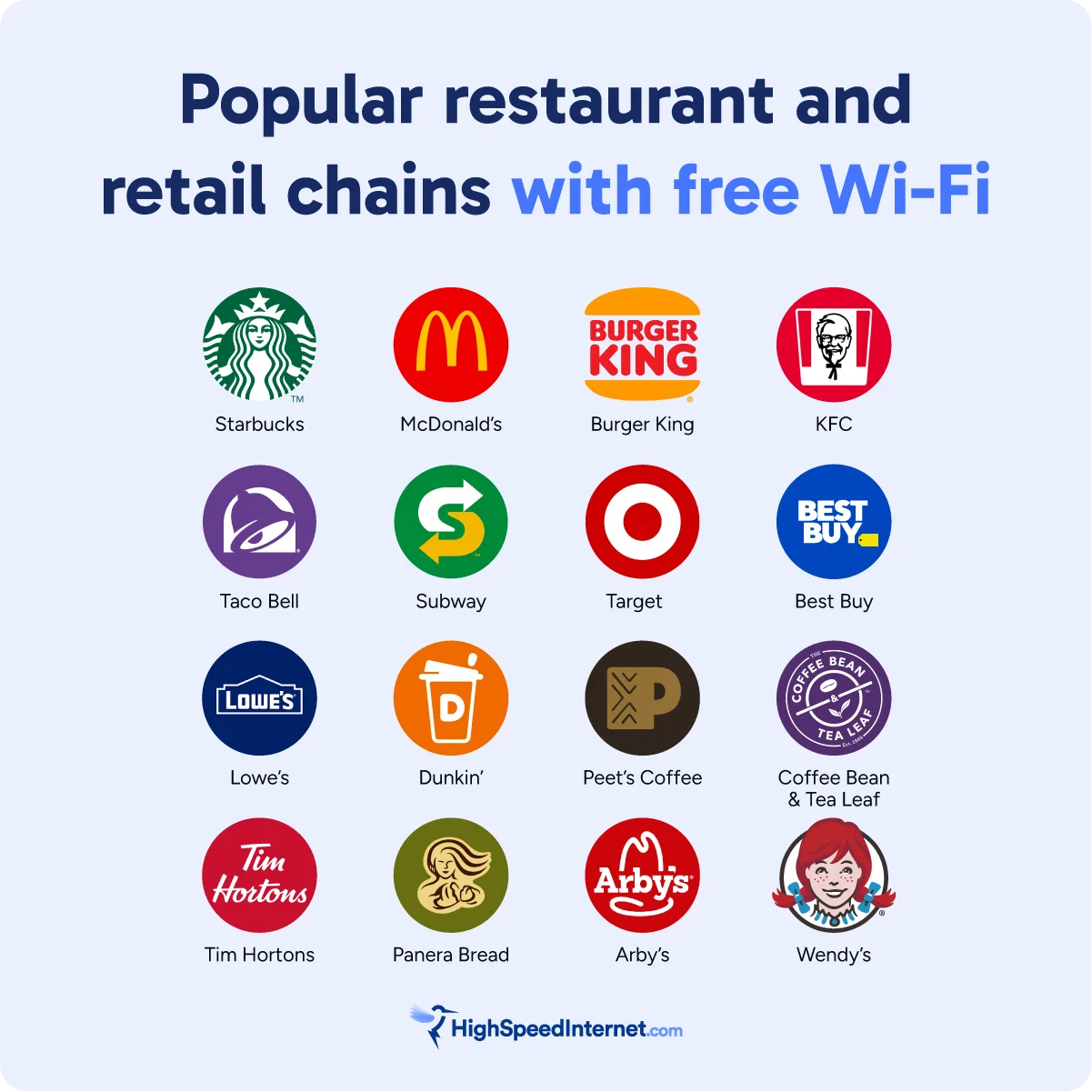
Use a travel router to give your travel Wi-Fi a boost
A travel router is a small device that improves your connection and increases your security while you’re plugged into a public Wi-Fi network.
It lets you set up a private network using an Ethernet connection from a public hotspot. So if you’re at a hotel, you can plug the travel router into a hotel-provided internet access point like an Ethernet port or hub. When you run the Wi-Fi through your travel router, it lets you bypass encryption and firewalls, connect more devices, and increase your signal range.
Best travel router
| Router | Wi-Fi version | Max throughput | Order online* |
|---|---|---|---|
| TP-Link TL-WR3002X | Wi-Fi 6 | 3,000Mbps | $89.99 on Amazon |
*Amazon.com price (as of 7/30/2025). See disclaimer.
Best for road trips: Car Wi-Fi and built-in hotspots
Many newer vehicles—especially deluxe models and family sedans—have onboard Wi-Fi hotspots that give you internet access on the go.
Wi-Fi can be useful for maps apps while you’re driving a car—please don’t use it to catch up on the latest episode of Love Island behind the wheel. But so long as you’re paying attention to the road, an in-car hotspot is great because it lets your friends and family enjoy Wi-Fi access on long drives and road trips to watch movies, play games, and even get work done if necessary.
Pro tip:
Take a look at our guide to car Wi-Fi for details on how to set up a hotspot in your vehicle.
Best car internet plans
| Wi-Fi system | Car brands | Starting price | Order online |
|---|---|---|---|
| OnStar | Chevrolet, Cadillac, GM, Buick | $19.99/mo. | View Plans |
| Toyota Wi-Fi Connect | Toyota | $20.00–$25.00/mo. | View Plans |
| FordPass Connect | Ford | $20.00–$25.00/mo. | View Plans |
| Volkswagen Car-Net | Volkswagen | $20.00/mo. | View Plans |
Data as of 7/30/2025. Offers and availability may vary by location and are subject to change.
Many cars with built-in Wi-Fi hotspots need a data plan from AT&T. Prices and features vary based on the make and model of your vehicle, but expect to pay around $20 to $25 per month for a data plan (with additional savings if you bundle with an AT&T mobile phone plan).
Best for digital nomads: Starlink Mini satellite internet
Pros
High-speed, low-latency connections
Global connectivity, even in remote areas
Cons
Expensive startup costs
Requires outdoor setup
RVs and Sprinter vans typically have built-in systems for utilities like water and gas, but if you’re living on the road, then you need to figure out a separate system for Wi-Fi.
The best solution on the market is the Starlink Mini. It requires a separate power source, but fits in a backpack and can easily be mounted on a sunroof or rear window. The cost is high at startup, and monthly service fees are required. But if you need fast internet from absolutely anywhere, Starlink can’t be beat.
If Starlink isn’t your style, check out other great portable Wi-Fi options like the T-Mobile AWAY or a standalone hotspot.
Our verdict
When it comes down to it, the personal hotspot on your smartphone is the best way to get pocket Wi-Fi on the road.
If you’re worried about costs or budgeting a strict hotspot data cap, remember you can often find a restaurant or hotel with free Wi-Fi. For living out of an RV or van, though, you’re better off with Starlink or a service like T-Mobile AWAY.
FAQ about getting Wi-Fi while traveling
Does portable Wi-Fi work with an eSIM card?
How much does portable Wi-Fi cost?
Disclaimers
Hotspot mobile phone plans
* T-Mobile
for 1 phone line + taxes and fees. AutoPay discount using an eligible payment method applied.
† Verizon
With paper-free billing and Auto Pay. Plus taxes & fees.
‡ AT&T
5G coverage not available everywhere. Requires compatible device/service. Other terms and restr’s apply. Data charges may apply.
§ Visible
Taxes and fees included. Welcome discount applied.
Amazon
Amazon.com Prices as of 7/30/2025 at 3:10 p.m. MT. Product prices and availability are accurate as of the date/time indicated and are subject to change. Any price and availability information displayed on Amazon.com at the time of purchase will apply to the purchase of this product. Highspeedinternet.com utilizes paid Amazon links.
Starbucks
Starbucks’ logo is a registered trademark of Starbucks. Starbucks is not compensated or affiliated with this review or Clearlink in any way.
Author - Chili Palmer
Chili Palmer covers home tech services, with a special focus on understanding what families need and how they can stay connected on a budget. She handles internet access and affordability, breaking news, mobile services, and consumer trends. Chili’s work as a writer, reporter, and editor has appeared in publications including Telecompetitor, Utah Business, Idaho Business Review, Benton Institute for Broadband & Society, and Switchful.com.
Editor - Jessica Brooksby
Jessica loves bringing her passion for the written word and her love of tech into one space at HighSpeedInternet.com. She works with the team’s writers to revise strong, user-focused content so every reader can find the tech that works for them. Jessica has a bachelor’s degree in English from Utah Valley University and seven years of creative and editorial experience. Outside of work, she spends her time gaming, reading, painting, and buying an excessive amount of Legend of Zelda merchandise.

